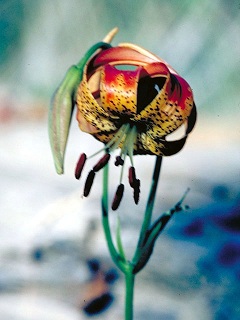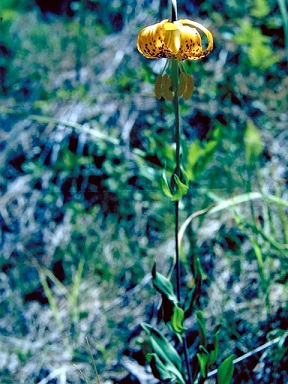Flowering July to mid-August of this lily are not fragrant, they are sometimes clear orange but usually yellow-orange or orange with darker red-orange to red or crimson. Anthers are magenta or purple, pollen is dark orange or sometimes rust-orange.
|
|
|
Hansen's Northwest Native Plant Database |
|
|


